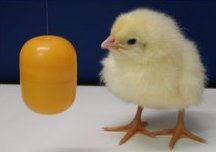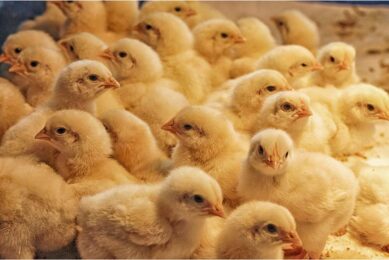Research says baby chickens can count

Baby chickens can do arithmetic, say researchers in Italy at the universities of Padova and Trento, who demonstrated chicks’ ability to add and subtract objects as they were moved behind two screens.
The BBC reports that an author of the study, Lucia Regolin, said the animals “performed basic arithmetic” to work out which screen concealed the larger group of objects.
Chicks aim to stay near to objects they are reared with, basically in the same way that they remain close to their mother after they hatch. This instant recognition is known as “imprinting”.
“We had already found that the chicks have a tendency to approach a group containing more of these familiar objects,” explained Professor Regolin, who studies animal behaviour at the University of Padova.
She and her team were able to test the birds’ numerical skills as they followed the objects – which, in this instance, were small plastic balls.
“We used the little plastic containers you get inside Kinder eggs and suspended them from fishing line,” Professor Regolin told BBC. “We made these balls ‘disappear’ by moving them behind the screens one at a time.”
Experimenting with the chicks
In each of the mini maths tests, a chick watched from a clear-fronted holding box while one of the researchers slowly moved the balls behind the screens – 3 behind one screen and 2 behind the other.
The BBC goes on to report that the front door of the box was then opened, releasing the chick into the tiny arena, so it could walk around and select a screen to look behind.
“The chicks still approached the larger of the two groups first, even though they had to rely on memory to work out which screen to choose,” said Professor Regolin, adding that swapping the objects from one screen to another didn’t fool the chicks.
Baby chickens “count” the balls
“In a further experiment, once we had hidden the balls behind each screen, we transferred some of them from one to the other,” Professor Regolin explained, adding that the chickens were able to “count” the balls that were moved to work out which screen hid the larger set at the end of the transfer. “They still chose correctly – adding up the numbers based on groups of objects they couldn’t see at that moment.”
Source: BBC













